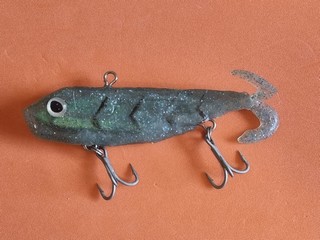Posts Tagged ‘soft plastic’
{{start}}
{{end}}

{{+1}}Recycling a damaged 115mm vibe{{-1}}
{{start}}
OK its not as good looking as the original vibe but it was a great way to keep myself entertained on yet another windy and wet day.{{end}}






























